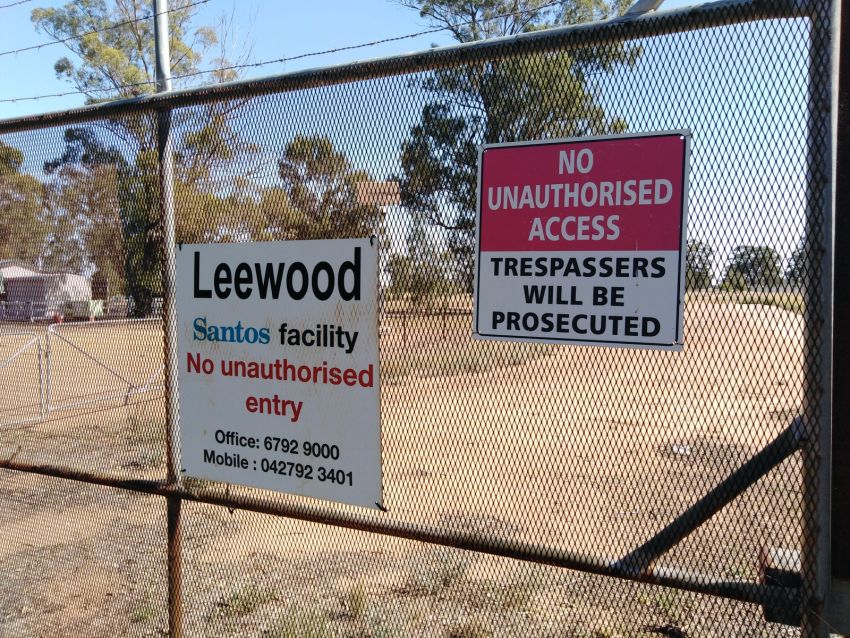
I was as pissed off as most people when Santos' coal seam gas project was approved in Narrabri, despite 98% of people opposing it. So I decided to spend a few days cycling the area in the north-west of New South Wales before it's possibly destroyed forever. Along the way, I met the activists who are fighting back.
Day 6: Narrabri to Pilliga Pottery
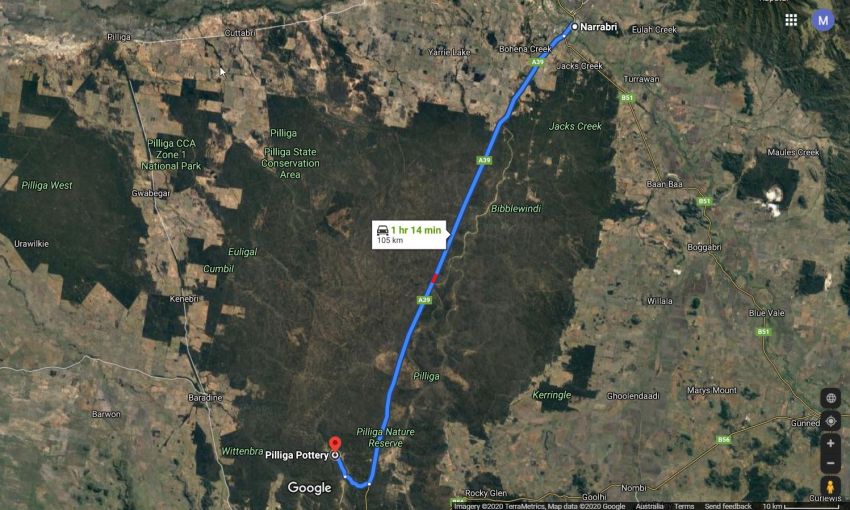
9.03am The Pilliga Forest is beautiful
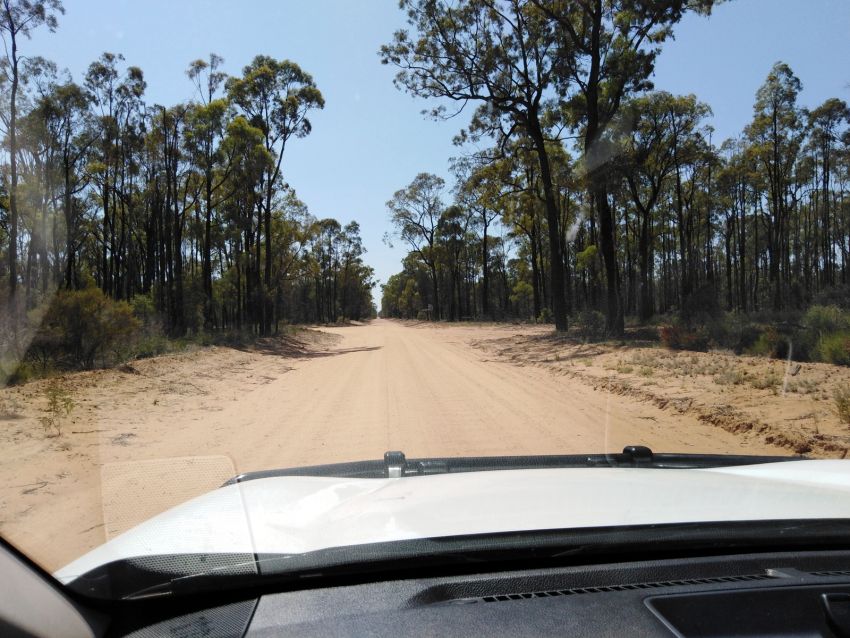
I can cycle only 100km a day in dry heat, so it had looked like the Pilliga Forest, where Santos is drilling for gas, was out of bounds for me. Luckily, the host of my Airbnb was as keen to see what Santos was up to as I was. Now, as he drives us in, it's easy to see why the forest's fine red sand and iridescent greenery has been called iconic.
9.05am Santos' Leewood facility has been targeted by activists
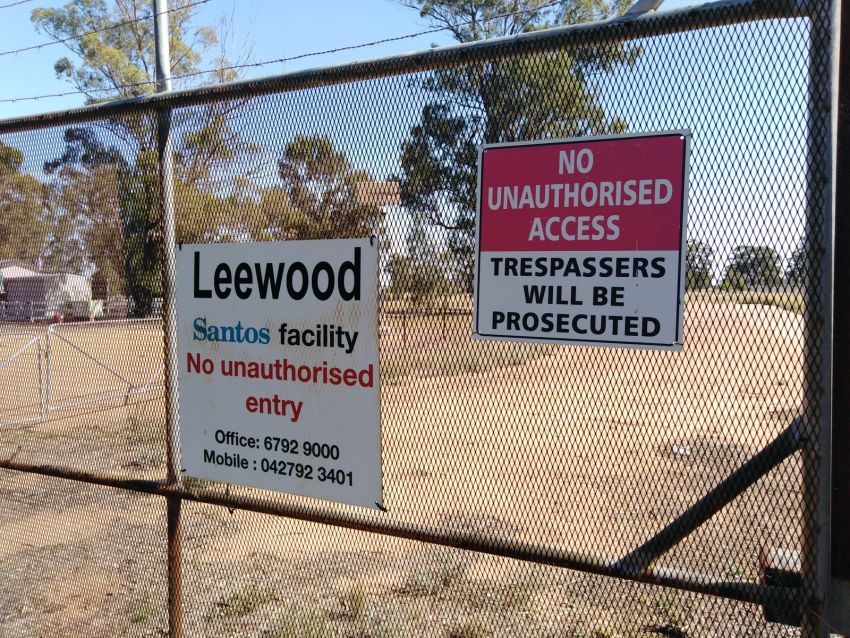
About 50 people were arrested trying to enter Santos' Leewood waste water treatment facility during a protest. It is supposed to safely dispose of the salt that will be produced by the gas project, but Santos has struck only a memorandum of understanding with a company called Natural Soda, so there are no firm plans for how this will be done. "The Eiffel Tower weighs 10,000 tonnes," Professor Stuart Khan, from the University of New South Wales' School of Civil and Environmental Engineering Research, told The Australian Financial Review in September. "The mass of salt produced from this project is equivalent to 43 Eiffel Towers, or 430,000 tonnes over the lifetime of the project." But as activist Dan Lanzini previously told Green Left: “Over eight years, Santos had only admitted to producing 480,000 tonnes of salt waste. This amount suddenly jumped to 800,000 tonnes in the report to the Independent Planning Commission.” The Pilliga Forest is an essential recharge zone for the Great Artesian Basin, the only water source for much of NSW, yet professor Khan says the gas project "will inevitably lead to the production of highly saline leach and an associated high risk of seriously contaminated groundwater and surface water".
9.18am There are many Santos 'rehabilitation areas' throughout the forest
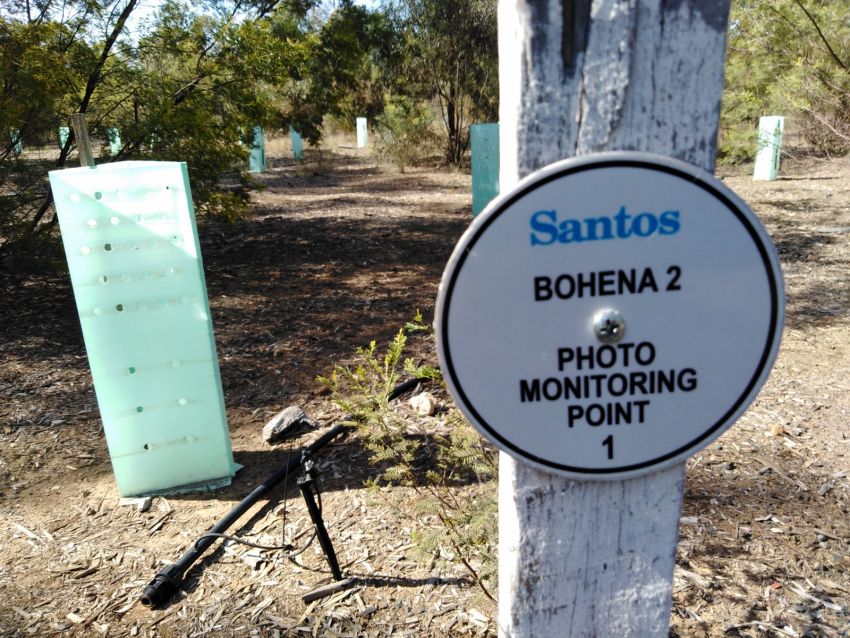
Santos is trying to regrow vegetation at its various spill sites to prove it can be done. All look to be either in their early stages of growth or failing. Activists say, from their observations over the years, none have been successful. On November 20, I emailed Santos a set of questions, including one asking whether any such sites had been successful. At the time of publication, I had received no reply.
9.52am This spill site is said to contain uranium
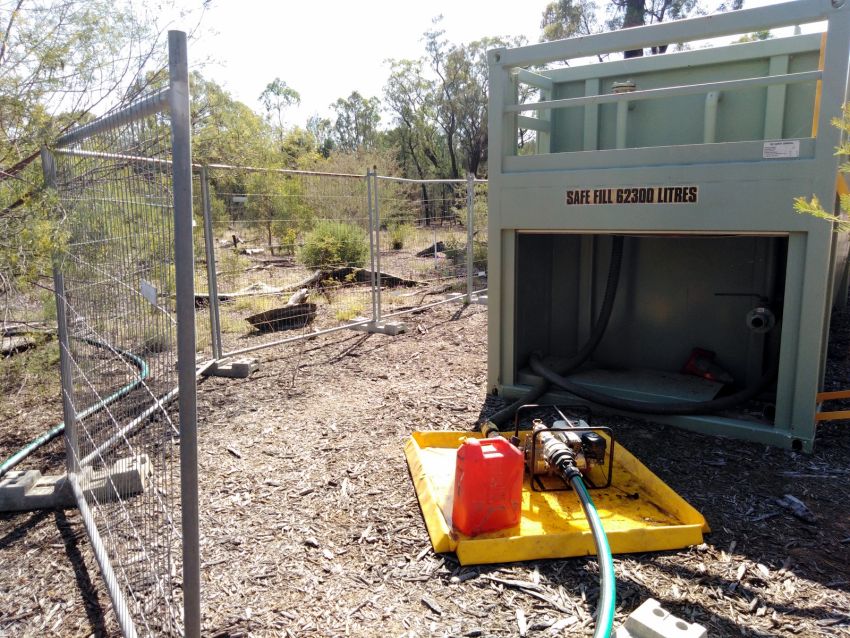
Santos was fined just $1500 in 2014 when an official investigation found that it had contaminated a nearby aquifer with uranium at levels 20 times higher than safe drinking water guidelines.
10.06am Activists say Santos 'test wells' are producing commercial gas already
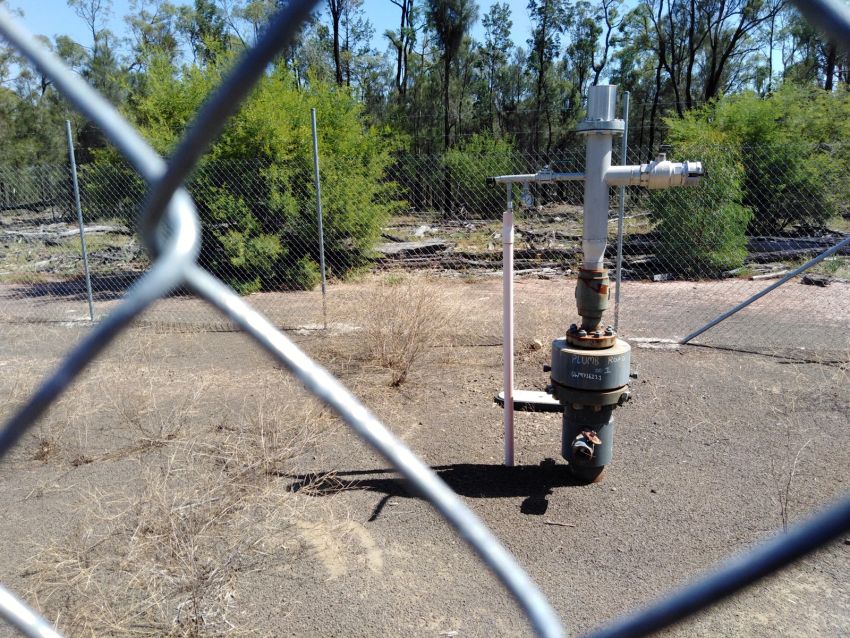
This is one of three test wells we saw on Plum Road. But activist Dan Lanzini previously told Green Left there is “no such thing” as an exploration well. “They are all production wells. If Santos don’t get this gas field approved, they will lose big money — that’s why they are desperate.” Economists say the $1 billion-plus gas project's numbers simply don't add up, which raises questions as to why the federal government has been backing it as part of its "gas-fired recovery" for the coronavirus-hit economy. A Guardian analysis of available records from 2010/11 showed more than $6.4 million in donations to the Labor Party and the Coalition from nine big companies with gas interests, including Santos. "In the most recent year available, the 2018/19 financial year, about $826,000 was donated," said The Guardian. "The true scale of the industry’s influence, however, remains hidden from Australians due to flaws with the lobbying regime and donation disclosure laws."
10.33am The Bibblewindi Facilities Area contains huge waste water dams
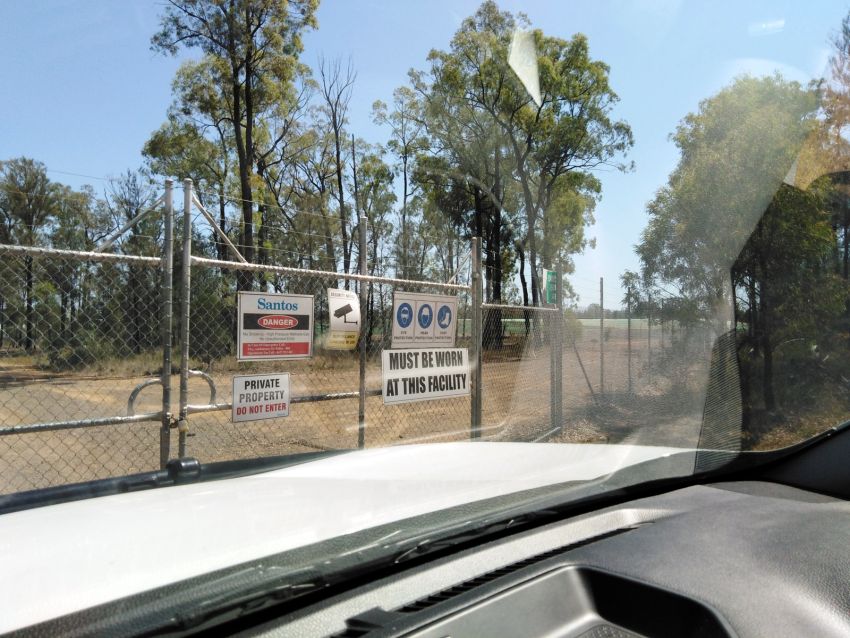
We pass two Santos vehicles driving the other way as we approach the company's Bibblewindi Facilities Area. From the perimeter fence, one of the large dams can be seen, painted green. “Santos has spent $20 million on this site," activist Dan Lanzini previously told Green Left. "The toxins flow downstream to Narrabri from here, along the Bibblewindi Creek. These saltwater dams, called ‘storage dams’, are filled up with toxic chemicals. The dams overflow regularly, and also crack and fail. The waste water includes radioactive uranium.”
11.59am The Pilliga Forest's Sandstone Caves are like a mini Uluru
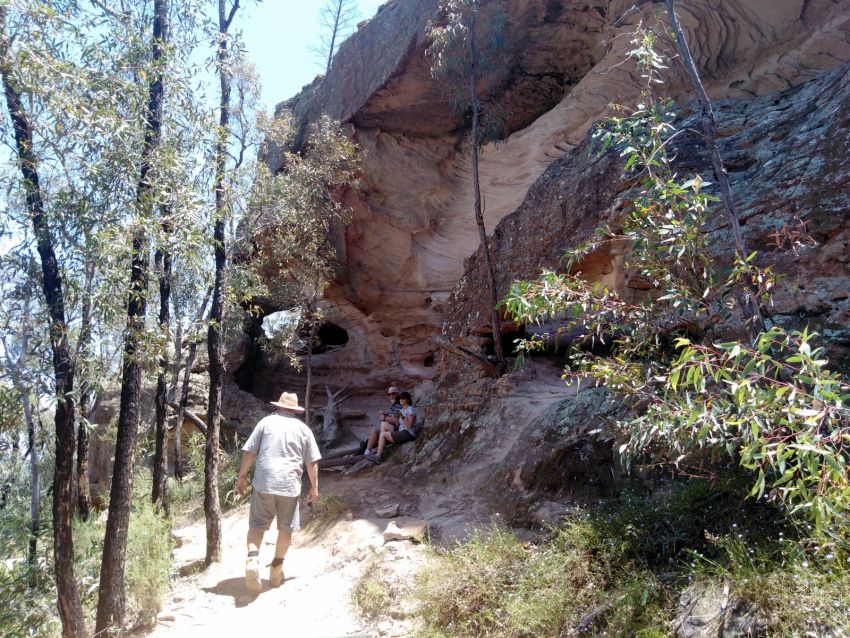
From photographs of the Sandstone Caves, you might assume - as I did - that they are just one or two caves. But they are huge, intricate, magical and run for about half of the circuit walk, which is 1.7km. Viewing them in the glorious midday heat and blinding light, I get the same otherworldly feeling I experienced when visiting the big red rock in the centre of Australia. Some parts of the Sandstone Caves that contain Aboriginal stone grinding sites have been vandalised by tourists copying the grinding action and are now caged off. The site is not signposted from the main highway.
12.30pm Wombats love the Sandstone Caves, too
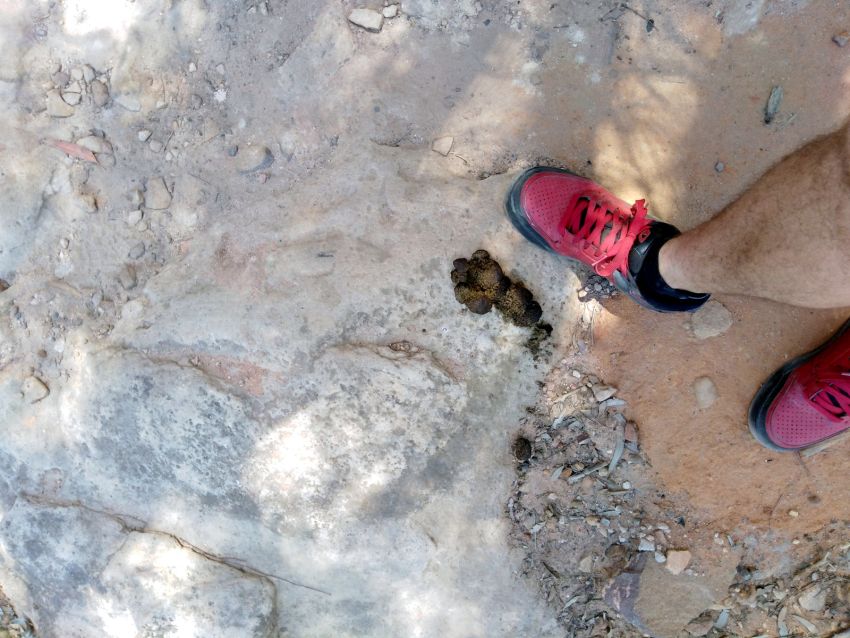
There's wombat poo everywhere, which is how they mark their territory.
2pm The owner of Pilliga Pottery is keen to talk
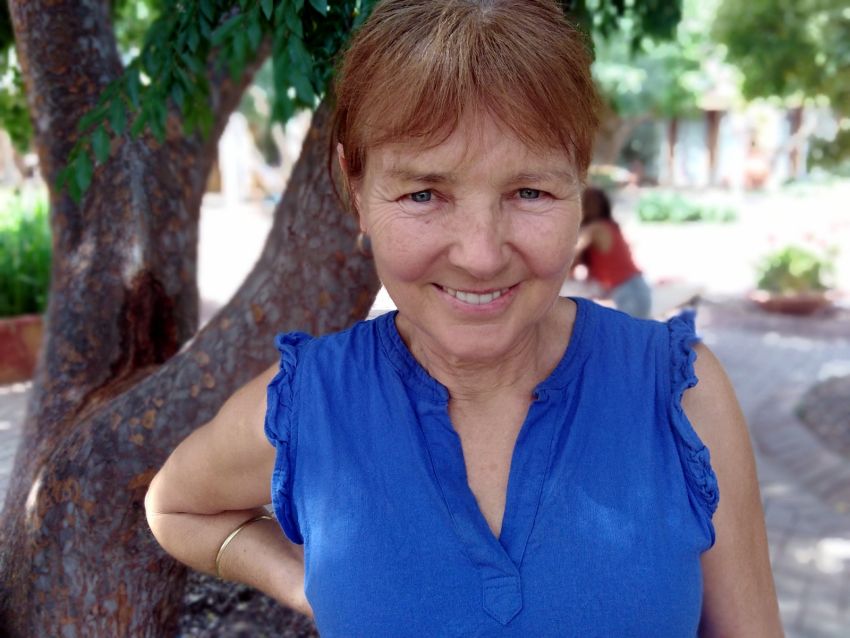
At the suggestion of my Airbnb host, we visit the Pilliga Pottery because he says its founder, Maria Rickert, should be good for a quote. She built the huge and popular pottery from scratch after visiting the forest in her youth as a German backpacker. After ordering lunch, I ask if the owner is around and I'm directed to her table. Rickert fetches Alan Dean, an anti-coal seam gas activist and retired civil engineer, and the pair of them sit down with us to talk. When I ask her about the prospect of Santos poisoning the Great Artesian Basin, Rickert points at one of her hand-made teacups on the table. "It's like tea," she says in her light German accent. "If you put a drop of milk in, you'll never get the milk out. We went to Moree the other week. The whole spa industry is based on the water from the Great Artesian Basin. So it's threatening not only for the tourist industry, but for the animals, for the environment. I struggle to share my anger or put my frustration into words. It affects me all the time emotionally but it also doesn't make any sense. There are plenty of alternative ways. I can't imagine it will happen. There's so much public outrage. Coronavirus has brought so many tourists [because they have not been allowed to travel outside New South Wales], so there's now so much interest in the Pilliga."
2.05pm This activist has seen it all happen before, in Queensland
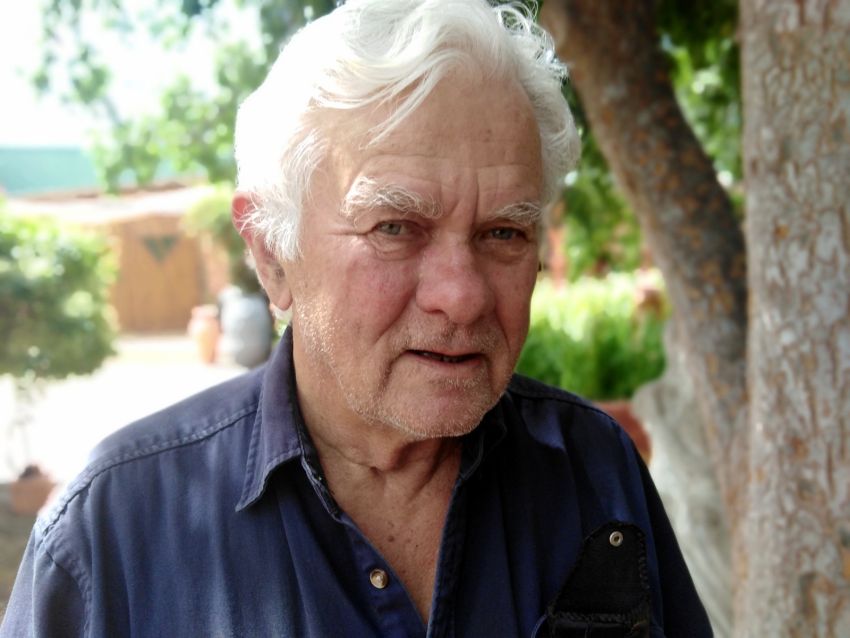
Alan Dean, a retired civil engineer, says he came down to the Pilliga to fight coal seam gas because he could see history repeating itself. "Dayne Pratzky, the activist who was featured in the documentary Frackman, told me to come down here because they were doing the same thing here they did up in Chinchilla in Queensland in 2014. At the first anti-coal seam gas meeting down here Maria brought cheesecake," he says of the Pilliga Pottery owner. "We're going to continue fighting it. We had meetings just recently." Asked how he thinks Santos could possibly make the project work economically, Dean shakes his head. "The only way Santos will get its money back is if the government gives a minimum price guarantee."
2.30pm There are activists from Extinction Rebellion visiting the pottery
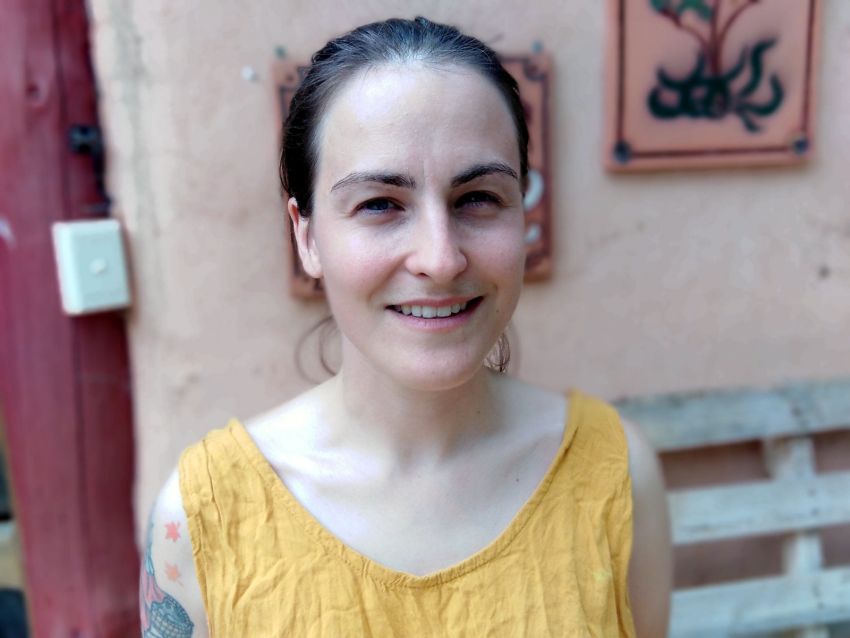
Maria Rickert takes me outside to meet two activists from climate change direct action group Extinction Rebellion. I talk with Shannan Langford Salisbury, who says: "We came up for the Gathering For Gomeroi and have been hanging out with the locals too. I studied animal and veterinary bioscience. I used to work with government in water conservation, so I know about that from working in the Murray. I'm very interested in the gas wells and damage to the forest. The fire risk is the most obvious. If we lose the forest, we lose our water and lose our food bowl and connection to land and history."
3pm This activist ran a protest camp next to the Pilliga's famed Sandstone Caves for four years
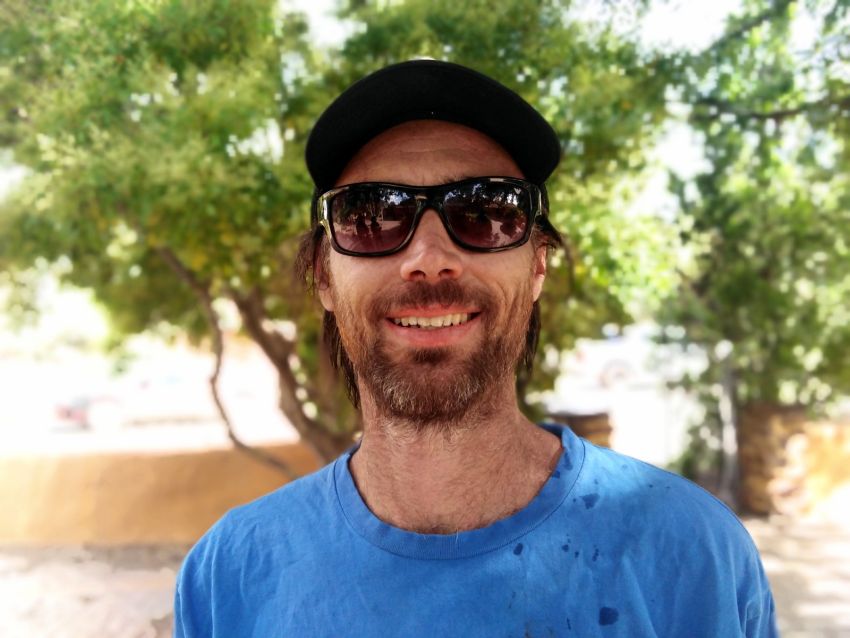
Other activists suddenly arrive at the pottery, including Dan Lanzini, who gave me directions to Santos' test wells over the phone the previous night. He's spent the past eight years fighting coal seam gas in the Pilliga and is as full of anecdotes as you might expect, from following the salt waste trucks all the way to controversial landfill site Mangrove Mountain, to getting tree-sitting activist Jen Hunt to call up her cousin, Greg Hunt, who was the federal environment minister at the time. When we mention we've just visited the Sandstone Caves, he says: "I ran a protest camp just 400 metres opposite the Sandstone Caves. It wasn't until the hardcore drought of 2018 that I had to move into town. It was just too hard with those 47 degree days. We were too worried about fires." When asked what hope he has about the Santos project being defeated, he says: "Fuck knows. The Independent Planning Commission failed. The conditions are all greenwash to make the greenies feel good. I started a sail shades business and I'm thinking of moving out because you can't raise kids here because the raw gas that's flared off affects people for a 30km radius and it affects kids very badly. Coonabrabran is in a valley and in winter you can see all the smoke from people's house fires sticks around, so that's what will happen with the gas. The first spill site was in '98, '99 by Eastern Star Gas, whose frackers were doing it out of a book in the middle of the night on the piss. They showed me spill sites I didn't know about. When it comes to gas, people compare Australia with Qatar, calling Qatar backwards, but at least in Qatar the gas money goes to the people. They get proper infrastructure, we get a sponsored sports field."
3.30pm This woman is also a long-time activist against local environmental destruction
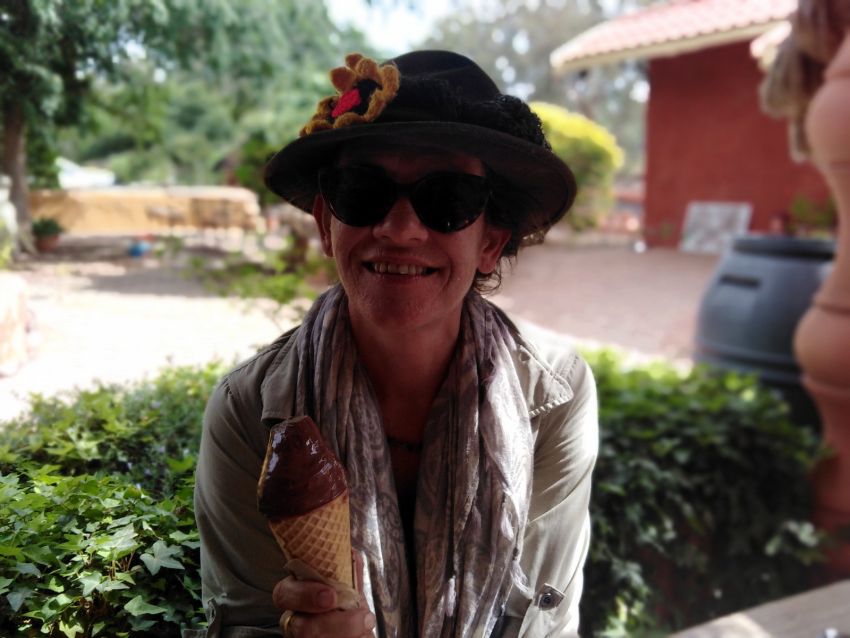
"For eight years I've been fighting it in different ways, coal and so on," says Tania Marshall. "It affects the whole country - Gomeroi country. I love koalas, love the bush. I do a lot of surveying for the koalas. I'm part of Wando environment group, the Leard Forest research node. The most effective method, we've found, has been enforcing compliance with environmental laws. We don't trust the Environment Protection Authority or the government to monitor Santos. Light pollution [from Santos' plants and gas flares] is a big issue for Siding Spring [observatory near Coonabarabran]. Santos did their job well in Narrabri with divide and rule. The common thing that's said is just don't talk about it."
4pm 'Water is the main issue for me'
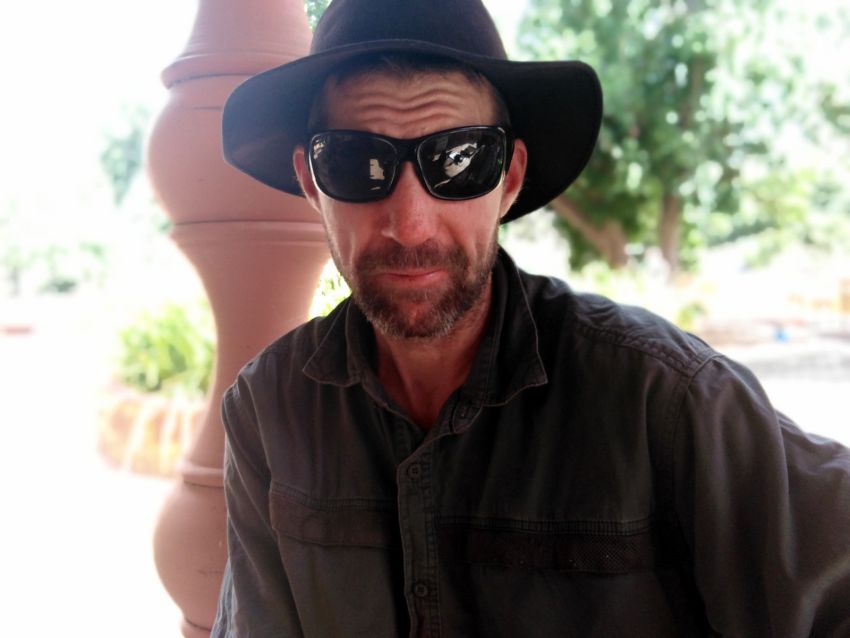
"I've been involved since 2008," says third-generation farmer Brett Hopkinson, formerly known as Brett Sanders. "Eastern Star Gas had a community meeting and I asked about the water. Water is the main issue for me. To do it in the Pilliga which we know is a major recharge centre - I just can't understand it. I can't see this as an industry for future generations. It's the opposite in fact. What happens to the wells? In 30 years they corrode. I got arrested for locking on in the forest and being a bit of a nuisance. I was featured in Green Left Weekly and on [right-wing shock jock] Alan Jones' show at the same time. My aunty almost fell off the chair when she heard me on Alan Jones. She didn't know I'd been arrested, it was the first she'd heard about it. My parents were fuming I'd gotten arrested, bitterly disappointed, until my aunty called them and told them I was on Alan Jones, then it was OK. Weird conservative ideals." He cracks up laughing.
Day 7 Narrabri to, well, Narrabri
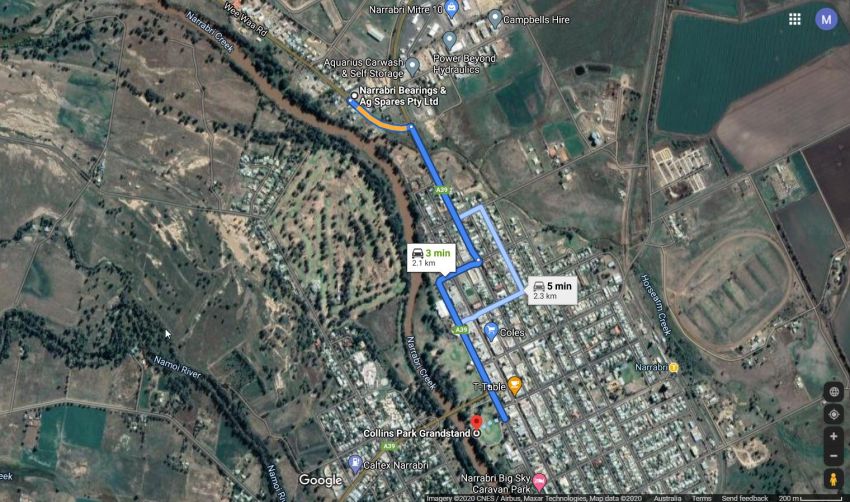
10.30am 'Bringing our children up in a Santos town is not appropriate'
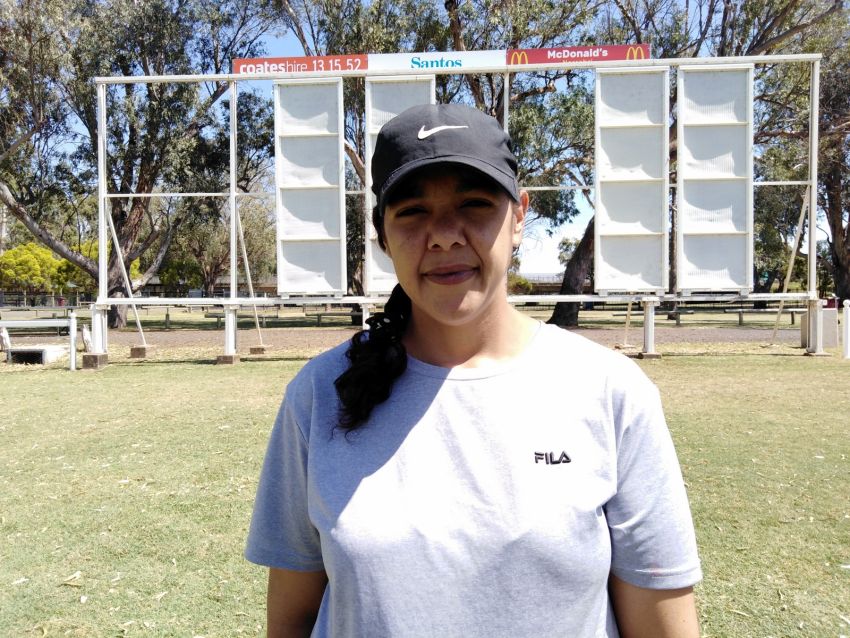
Gomeroi woman Karra Kinchela, 33, says she is not a natural activist. "I've lost my father and my mum's mother recently, so I've stepped up to make sure our family's still being spoken for," she says as we talk on the edge of Narrabri's Collins Park sports field, which is sponsored by Santos. "A lot of the non-government Aboriginal organisations are Santos-sponsored," she says as we walk over to the Santos-sponsored scoreboard to take a photo. I tell her to look out as I was just divebombed by several magpies near the scoreboard before she arrived. "My dad used to scare me about magpies by doing this," she says, and she takes off her cap and flaps it behind my head. It sounds just like an approaching magpie. She laughs. I take a few photos with the Santos sign behind her. "My partner plays football and has to wear the jersey with the Santos logo, which I don't think is appropriate," she says. "Winanga-Li kids group has [coal company] Whitehaven all over it and it's all over our sports jerseys and so on. Bringing our children up in a Santos town is not appropriate. We've always called this the safest place, because everyone's a sticky beak. But now it's set to become the unsafest place for our children."
10.45am 'Having to move off country is my biggest fear'
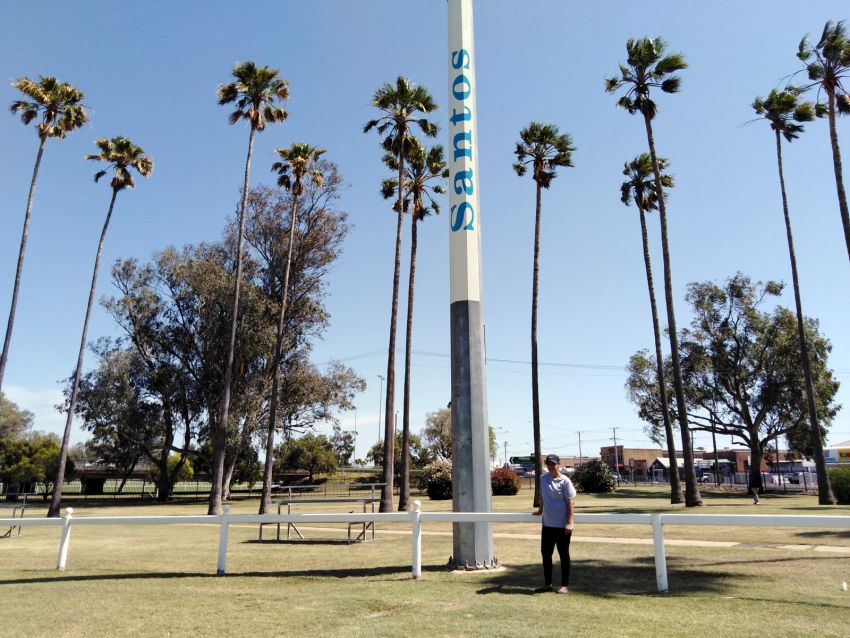
"We know the healing properties of the Great Artesian Basin," says Kinchela, "We know the Pilliga is a source for the Basin. The Basin is a big reason why our people stay in this area and always have. And we all know how one part of the land and water is connected to the rest. Having to move off country is my biggest fear, along with having no water here, poisoned water and poisoned land we can't grow food on. It's really quite scary and people can see the fear I have for myself and my people. We're a quiet town, we're not up for a big fight. It's really hard to maintain a job and work while you're fighting. I'm fighting it, but I'm doing it peacefully. We love everybody coming and we're happy to share. I love the activists and our people who are activists, but it can sometimes be more powerful communicating on a personal level rather than protesting in the street. The Gathering for Gomeroi [which deliberately requested no protests on the day] brought a lot of local people who live here who said they support us, Indigenous and non-indigenous. I went to school with these people, so I've got a lot of friends who come from farms, non-indigenous farmers. We have friends and our people on the farms and mines, and I say to them I understand that you're out there, but I have to make sure that you're culturally safe. We've had many attacks during COVID, the caves being blown up in Western Australia, the scar trees being destroyed to make way for a road in Victoria, the Australian Capital Territory not being able to fly the Aboriginal flag, our housing conditions, our health conditions - and it comes down to money ruling everything. The First Nations people have not agreed for the Santos project to go ahead and until we have a seat at the table it should not go ahead. If this goes through, our town will be held responsible for destroying everything, we'll be seen as the people who let it happen."
When I get back to Sydney, elder Polly Cutmore, who I'd called at the start of the trip, calls me. "Thank you for coming out and supporting us, Mat," she says. "I told the ancestors to look after you while you were here." For a second, I'm lost for words. "I felt that, you know," I eventually say. "I really felt that."
Comments? Criticisms? Corrections? Email [email protected]
ABOUT THE AUTHOR: Mat Ward has been writing for Green Left since 2009. He also wrote the book Real Talk: Aboriginal Rappers Talk About Their Music And Country and makes political music.